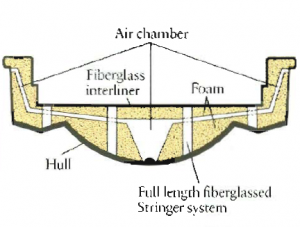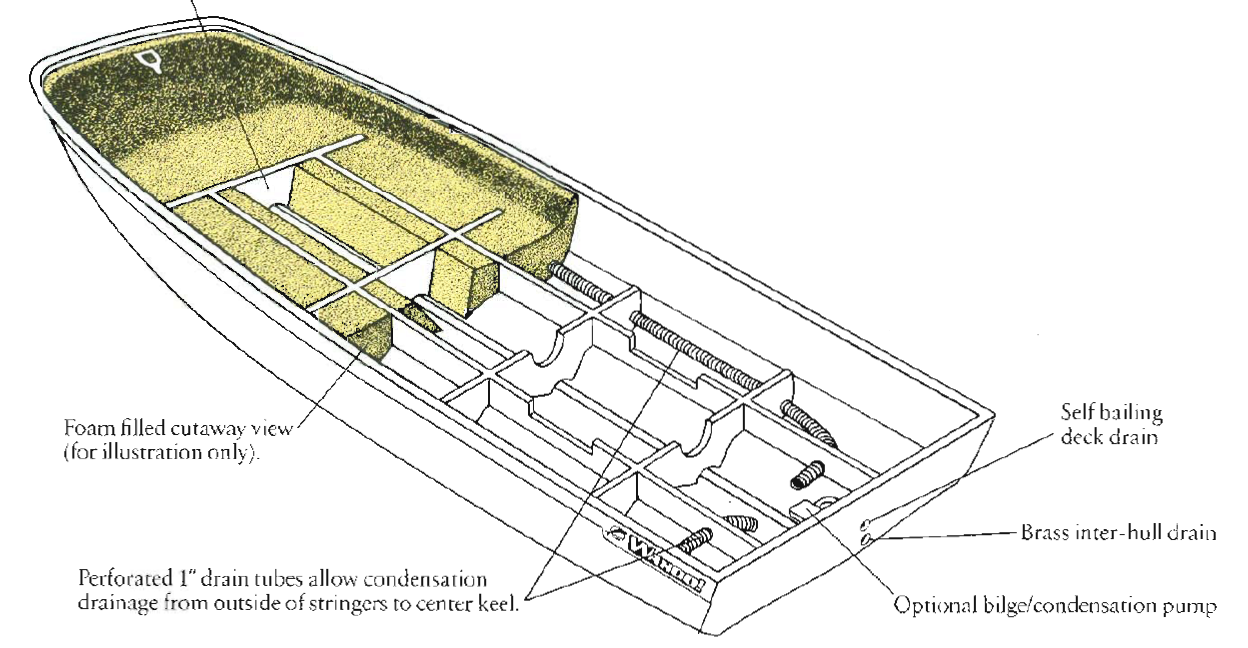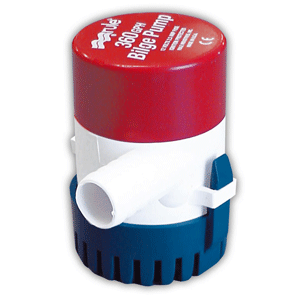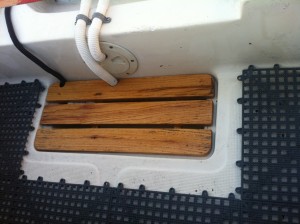







A site dedicated to discussion of these classic boats
1 Apr, 2012 7 Comments
Filed in: bilge, plumbing, reference
As a companion piece to the post on the Wahoo!s above-deck drain system, here’s one on the Wahoo!’s below-deck plumbing. Like the self-bailing deck, the Wahoo! hull interior is one of the most confusing features of these boats. As with the post on the deck drain system, I’ll update this article if and when new info becomes available. Note also that this post deals specifically with smaller Wahoo!s–the tri-hull models. For all I know the larger Wahoo!s (say, those over 21 feet) and/or the V hulls had a very different design. So your mileage may vary.
Basic to understanding the design of a Wahoo! is knowing what’s going on insider the hull. Some key points:
Wahoo! hulls contain foam. This helps with buoyancy of course. Boston Whaler hulls are foam “filled.” The “filled” part means every bit of the hull interior is filled with sprayed-in foam. This not only maximizes buoyancy, it also in theory keeps water out of the hull because there’s no literally place for it to collect. But there are a few potential drawbacks to this design. For one, because there is the assumption of no water ever entering the hull, Whaler hulls do not have a drain plug. That means if somehow water DOES manage to get in there, there’s no easy way to get it out. A second concern is that over time the hull foam may begin to absorb water, not unlike a sponge. The water could come from the outside or it could come from condensation inside the hull. Either way, as the foam absorbs water it takes on weight. That causes handling problems. And over time the moisture can cause the foam to break down.
Distinct from Whalers, Wahoo! hulls are foam “lined.” The “lined” part means that the top, sides, and bottom of the hull interior are coated with blown-in foam but there is an air cavity in between. Also the Wahoo! hull includes a drain hole in the stern. The advantage of this design is that the cavity allows the interior foam and stringers to “breathe”; that is, the ability to dry. And any water that does get into the hull can be drained. The downside, compared to the Whaler design, is that with less foam comes less buoyancy, and the air cavity allows water a place to collect.
 Cutaway showing Wahoo! foam liner and air cavity. Cutaway showing Wahoo! foam liner and air cavity. |
The original Wahoo!s from the mid 80s design did not include a bilge pump. Since that time 25 years’ worth of Wahoo! owners have wondered why, because water certainly finds its way into Wahoo! bilges, as it does with any other boat. It’s not immediately clear what the the absence of a pump meant from the manufacturer’s perspective. Maybe it meant the company had a misplaced faith that water wouldn’t get into the bilge. Or maybe it meant they assumed that most Wahoo!s would be used as trailer boats whose drain plugs would be opened after every use. Or maybe it was simply an attempt by the company to cut costs and leave it to customers to add their own bilge pumps. Whatever was behind the initial decision to omit a pump, it was not adequate. Within a several years Wahoo! brochures began mentioning an “optional” bilge pump.

So does your Wahoo! need a pump in the bilge? First, let’s talk about the ways that water can get into the bilge. Leaving aside leaks in the hull exterior (but all the more reason for a bilge pump), you have:
These things together or alone can allow quite a bit of water into you hull. Water is especially good at finding its way in when its got some force behind it, such as wind-driven rain or when you’re hosing the deck. Given the relatively small size and weight capacity of Wahoo!s, and that a gallon of water weighs seven pounds, it doesn’t take much to affect performance.
So to the question of whether your Wahoo! needs a pump in the bilge, I say the answer is, yes, absolutely. Even if you keep your boat on a trailer, the added safety and security that a bilge pump gives you make it well worth it. The installation is easy and inexpensive. I would not waste time considering a manual pump–put in an electric one and be done with it.
Locate the pump in the spot shown in the diagram above, at the rear of the bilge along the keel. This is the lowest section of the hull and where all water will run to. Most Wahoo! tri-hulls come with a five inch access port in the center of the stern through which you can install the pump. If yours does not include an access port you’ll need to add one.
Here are a few notes on the pump I installed in case it’s helpful to anyone. There are certainly other ways to do it.
 Rule 360 bilge pump. Rule 360 bilge pump. |
 Hose from bilge pump exists through hole in access port cover and drains into splashwell.. Hose from bilge pump exists through hole in access port cover and drains into splashwell.. |
Just as I was finishing this post I wondered whether anyone had ever configured his Wahoo! so that a single pump handled both the above and below deck drainage. You could achieve this pretty simply by installing a pump in the bilge and then drilling about a one inch hole in the bottom of the deck sump basin. That would dump all water that enteredd the boat into the bilge. It seems like a bad idea for a few different reasons, but man if anyone has ever tried it I’d love to hear how it went.
Here’s a little more reading on the subject:
http://www.thehulltruth.com/boating-forum/96775-16-wahoo-water-hull.html
(Note: in this message thread Monstawhala states that the top hole in the deck sump basin drains into the bilge, and that both stern compartments also drain directly into the bilge. That is not correct. The stern compartments drain into the sump basin via the aforementioned top hole in the sump basin.)
findre August 9, 2015
findre August 9, 2015
findre August 9, 2015
Lcolon7 June 23, 2015
MikeQ June 24, 2015